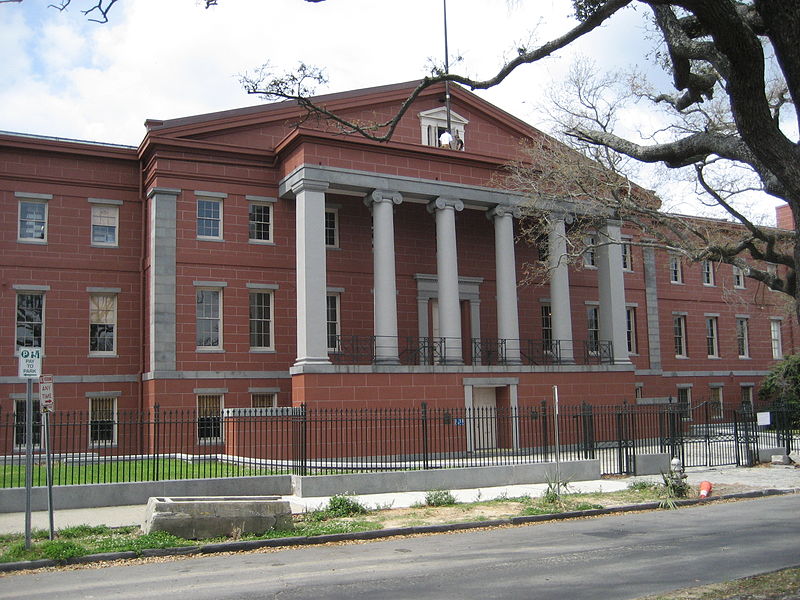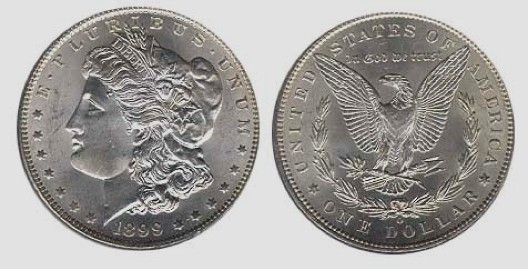Battle Creek Collection of Morgan Dollars
The coins of the Battle Creek Collection resided in ten $1,000 bags. Until March 1964, it was possible to redeem silver certificates with US silver dollar coins, and many collectors thus acquired original bags of Morgan dollars. The Battle Creek Collection bags were tagged with both original Philadelphia Mint tags and seals dated 1885 (2 bags), 1886 (2 bags), or 1887 (6 bags). Additionally, each had a supplementary tag from the Detroit Branch of the Chicago Federal Reserve bearing dates in the 1920's.
The bags had resided in the estate of a collector, and upon his passing his executor invited several coin dealers to make purchase offers on the group. The bags were sewn sealed, and dealers present were required to bid "blind," meaning they could not examine the coins prior to purchase. The bags were slit in their presence to prove that they did, in fact, contain silver dollars.
Here is one we just sold…
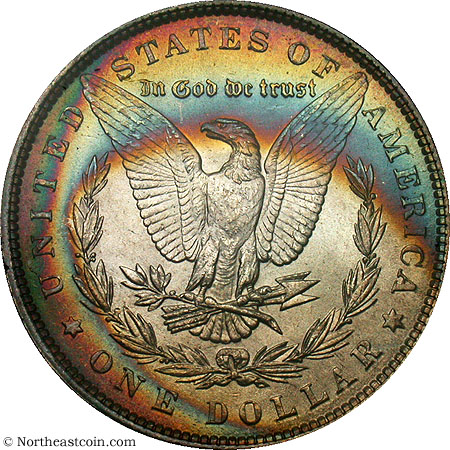
Battle Creek Collection Mint Bag tie:
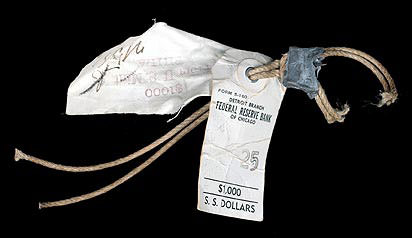
This seal secured the contents of a Philadelphia Mint bag of 1886 Morgan dollars, many of which now reside in the Battle Creek Collection.
When speaking to the House of Representatives in November 1792, President Washington mentioned the "want of small coins in circulation" and stated that he had begun work on establishing a U.S. Mint and that some half dismes had been produced already. At this point, most of the personnel had been hired, but the Mint's buildings and machinery were not yet ready. As a result, the half dismes, which had been struck in or around July 1792, were produced using the private facilities of local craftsman John Harper, although under the auspices of official Mint personnel. In his personal log book, Secretary of State Thomas Jefferson recorded the receipt of 1,500 specimens on July 13.
Because of President Washington's connection with these early coins, numismatic folklore holds that the portrait on the obverse is that of First Lady Martha Washington and that some of the coins were struck using melted-down silverware from the Washington household. However, there is no solid evidence for either of these assertions.
Collectors sometimes have trouble pronouncing the word disme. Is it ‘diz-mee’? Is it ‘dime’ like we pronounce it today? Actually, it is neither. Disme is a French word pronounced “deem”.
Shown below is the finest known example, graded MS68 by NGC.
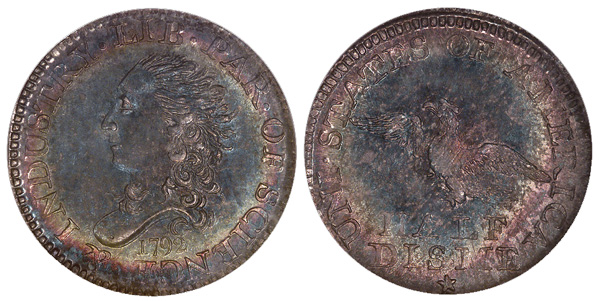
And here (below) is a 1792 Half Disme that we currently have in our office. It's part of a large estate that we are in the midst of appraising.
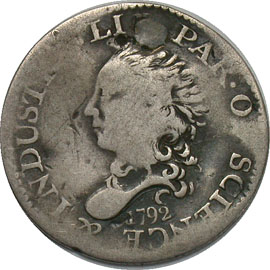
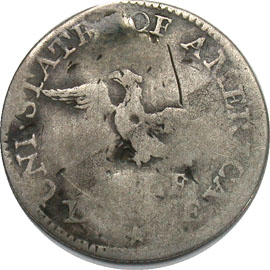
The Washington quarter is the present quarter dollar or 25-cent piece issued by the United States Mint. The coin was first struck in 1932; the original version was designed by sculptor John Flanagan.
As the United States prepared to celebrate the 1932 bicentennial of the birth of its first president, George Washington, members of the bicentennial committee established by Congress sought a Washington half dollar. They wanted to displace for that year only the regular issue Walking Liberty half dollar; instead Congress permanently replaced the Standing Liberty quarter, requiring that a depiction of Washington appear on the obverse of the new coin. The committee had engaged sculptor Laura Gardin Fraser to design a commemorative medal, and wanted her to adapt her design for the quarter. Although Fraser's work was supported by the Commission of Fine Arts and its chairman, Charles W. Moore, Treasury Secretary Andrew W. Mellon chose a design by Flanagan, and Mellon's successor, Ogden L. Mills, refused to disturb the decision.
The new silver quarters entered circulation on August 1, 1932; and continued to be struck in silver until the Mint transitioned to copper-nickel clad coinage in 1965. A special reverse commemorating the United States Bicentennial was used in 1975 and 1976, with all pieces bearing the double date 1776–1976; there are no 1975-dated quarters. Since 1999, the original eagle reverse has not been used; instead that side of the quarter has commemorated the 50 states, the nation's other jurisdictions, and National Park Service sites—the last as part of the America the Beautiful Quarters series, which will continue until 2021. The bust of Washington was made smaller beginning in 1999; in 2010 it was restored to bring out greater detail.
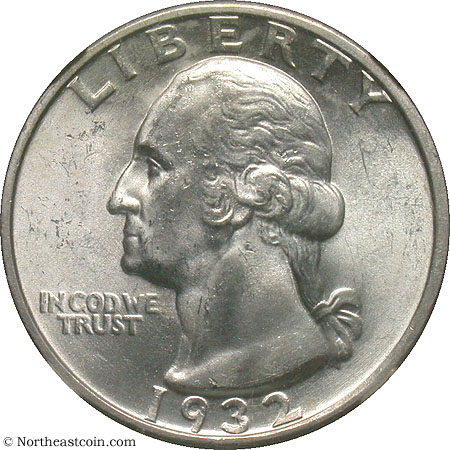

When the Lincoln one-cent coin made its initial appearance in 1909, it marked a radical departure from the accepted styling of United States coins, introducing as it did for the first time a portrait coin in the regular series. A strong feeling had prevailed against using portraits on U.S. coins, but public sentiment stemming from the 100th anniversary celebration of Abraham Lincoln's birth proved stronger than the long-standing prejudice.
For much more on the subject… www.treasury.gov/about/education/Pages/lincoln-cent.aspx
“Things may come to those who wait, but only the things left by those who hustle”
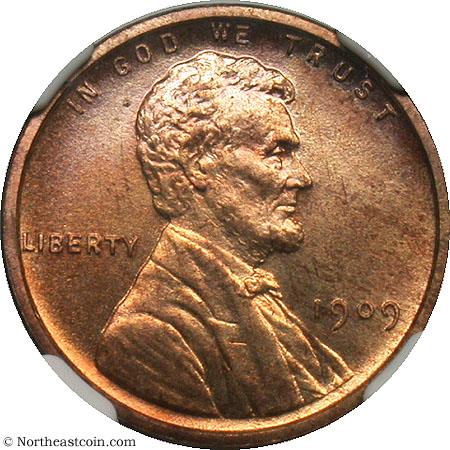

The New Orleans Mint operated in New Orleans, Louisiana, as a branch mint of the United States Mint from 1838 to 1861 and from 1879 to 1909. Coins minted in New Orleans have the ‘O’ mint mark. During its years of operation, it produced over 427 million gold and silver coins of nearly every American denomination, with a total face value of over US$ 307 million.[3] It was closed during most of the American Civil War and Reconstruction. After it was decommissioned as a mint, the building has served a variety of purposes, including as an assay office, a United States Coast Guard storage facility, and a fallout shelter. Since 1981 it has served as a branch of the Louisiana State Museum. Damaged by Hurricane Katrina in 2005, after over two years of repairs and renovations, the museum reopened in October 2007.
